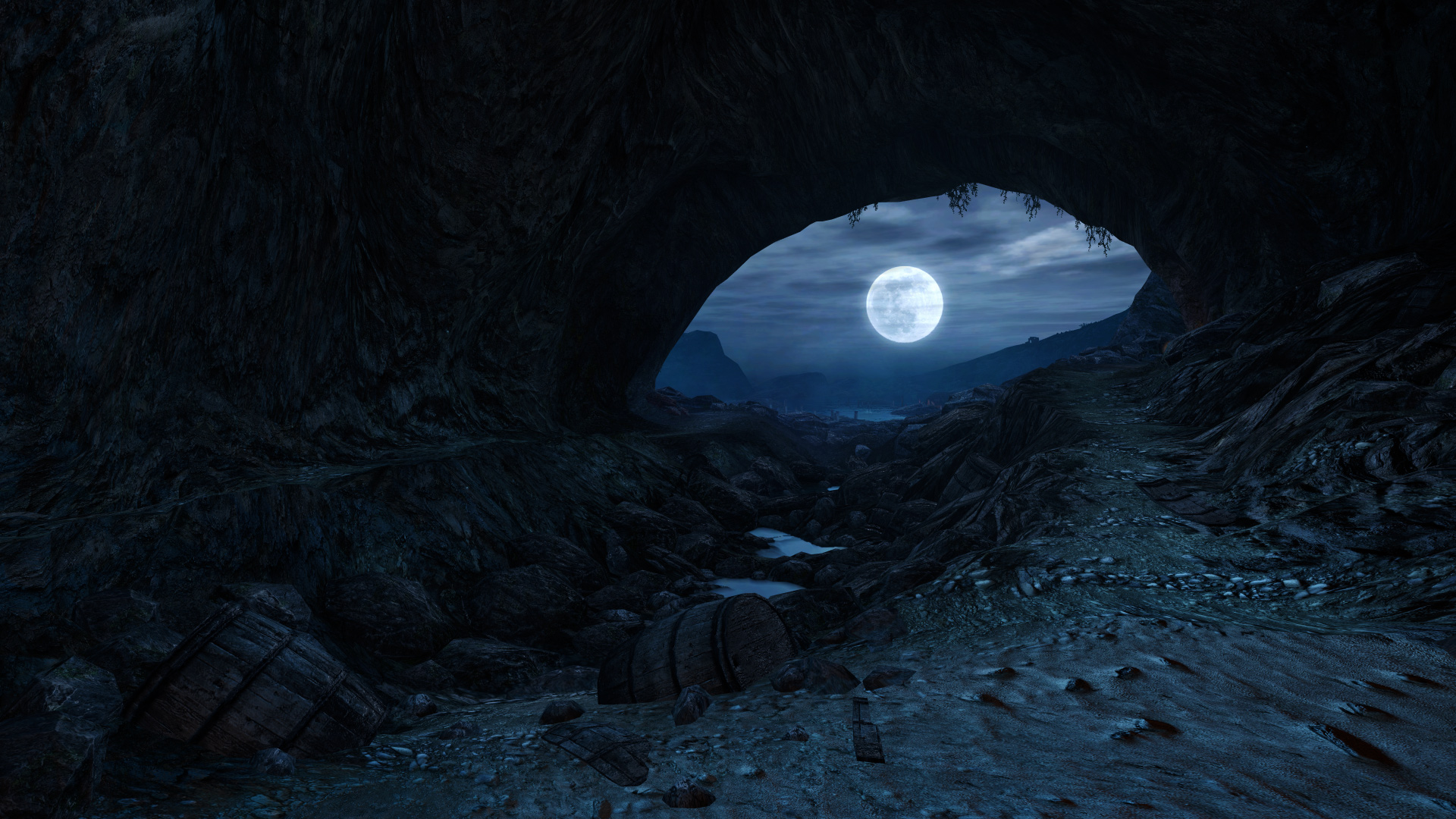

Tada! There’s that staircase you didn’t see initially. The true path is almost always crystal clear, and when it isn’t, it can usually be found by simply turning around. Dear Esther doesn’t once require the player to do any critical thinking outside of plot analysis. Walking the game’s linear trails at the plodding preset pace can be a bore. I don’t regret my time with Dear Esther in any way, but the experience is much more enjoyable in hindsight. It’s the type of story you look forward to showing a friend or discussing around the water cooler or your favorite forum in an attempt to harvest what others took away from it.

After initially being put off by the dialogue’s heavy-handed literary style, I eventually warmed up to as I was drip-fed pieces of the puzzle. As a fan of cerebral storytelling that largely leaves the tale’s meaning up to interpretation, I enjoyed Dear Esther’s vagueness. Carrington’s soothing voice is the only thing that breathes true meaning into the sights seen in Dear Esther, and the subtle emotion conveyed in his acting thoroughly invested me in the narrative. Sections of letters written to Esther are read by talented British actor Nigel Carrington, acting as the game’s narration. Dear Esther finds success merely as a demonstration of the gorgeous environments that can be constructed with the Source engine, but the experience has even more to offer. Dozens of tiny story hints and other oddities are hidden in nearly every corner. I loved gazing at the carcasses of ships battered against the coastline, stretches of lush, green hillsides pocked with intriguing rock formations, and a vast cavern network decorated with legions of dripstones lit by an otherworldly glow. Keeping the focus on only steering the protagonist allows players to lose themselves examining the game’s gorgeous setting.

You won’t be leaping across gaps or even opening doors in this focused stroll across the geologically diverse island. Control of the main character is simplified to basic movement and observation. Interaction with the world of Dear Esther is limited. This brief glimpse into one man’s pained reflections may not qualify as a game to many, but it’s a journey worth taking for open-minded gamers.
#DEAR ESTHER PC GAME UPDATE#
The update includes enhanced visuals, remastered music and narration, and polished stage design – though labeling the sprawling Hebridean landscapes and awe-inspiring caverns “stages” would be disingenuous. Thechineseroom’s Dear Esther has been remade with the help of Robert Briscoe, a former DICE employee and environmental artist for Mirror’s Edge.
#DEAR ESTHER PC GAME MOD#
An uncompromisingly inventive game delivered to the highest AAA standards.ĭear Esther: Landmark Edition has been remade with the Unity engine, featuring a full audio remaster, and the addition of a brand-new Directors' Commentary mode, allowing players to explore the island and learn what inspired the game and how it was crafted by The Chinese Room and Rob Briscoe.Back in 2008 an ambitious indie mod was released using Valve’s Source Engine to tell the somber tale of a man coping with loss while exploring an enigmatic island.Stunning soundtrack composed by Jessica Curry, featuring world-class musicians.A poetic, semi-randomised story like you've never experienced in a game before.Explore incredible environments that fully immerse you in the haunting island and its mysterious past.Every play-through a unique experience, with randomly generated audio, visuals and events.As you step forwards, a voice begins to read fragments of a letter: 'Dear Esther.' - and so begins a journey through one of the most original first-person games of recent years.Ībandoning traditional gameplay for a pure story-driven experience, Dear Esther fuses its beautiful environments with a breathtaking soundtrack to tell a powerful story of love, loss, guilt and redemption. a book written by a dying explorer.'ĭear Esther immerses you in a stunningly realised world, a remote and desolate island somewhere in the outer Hebrides.


 0 kommentar(er)
0 kommentar(er)
